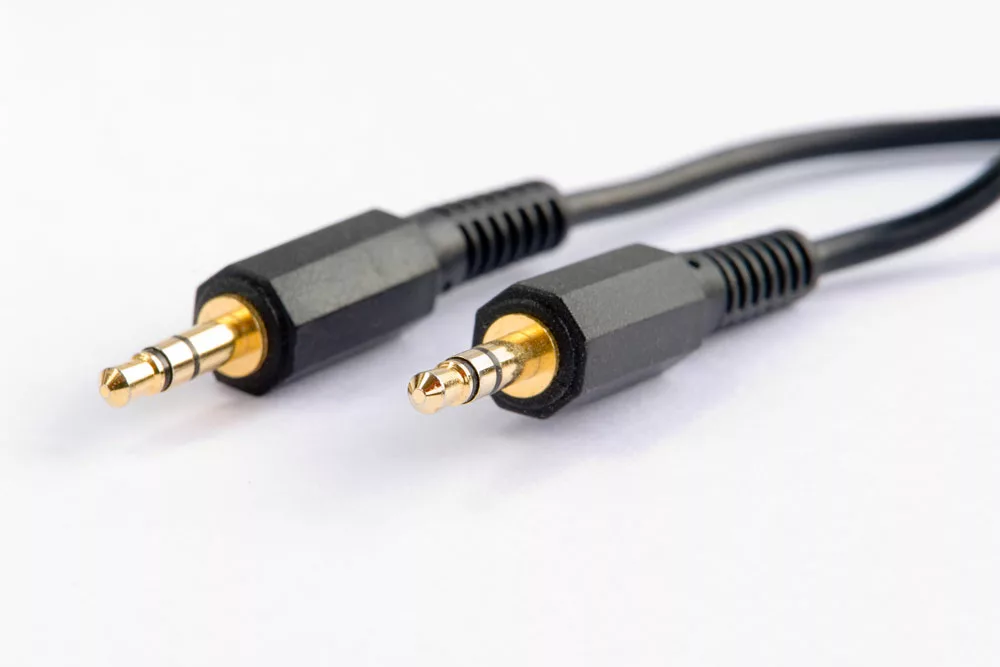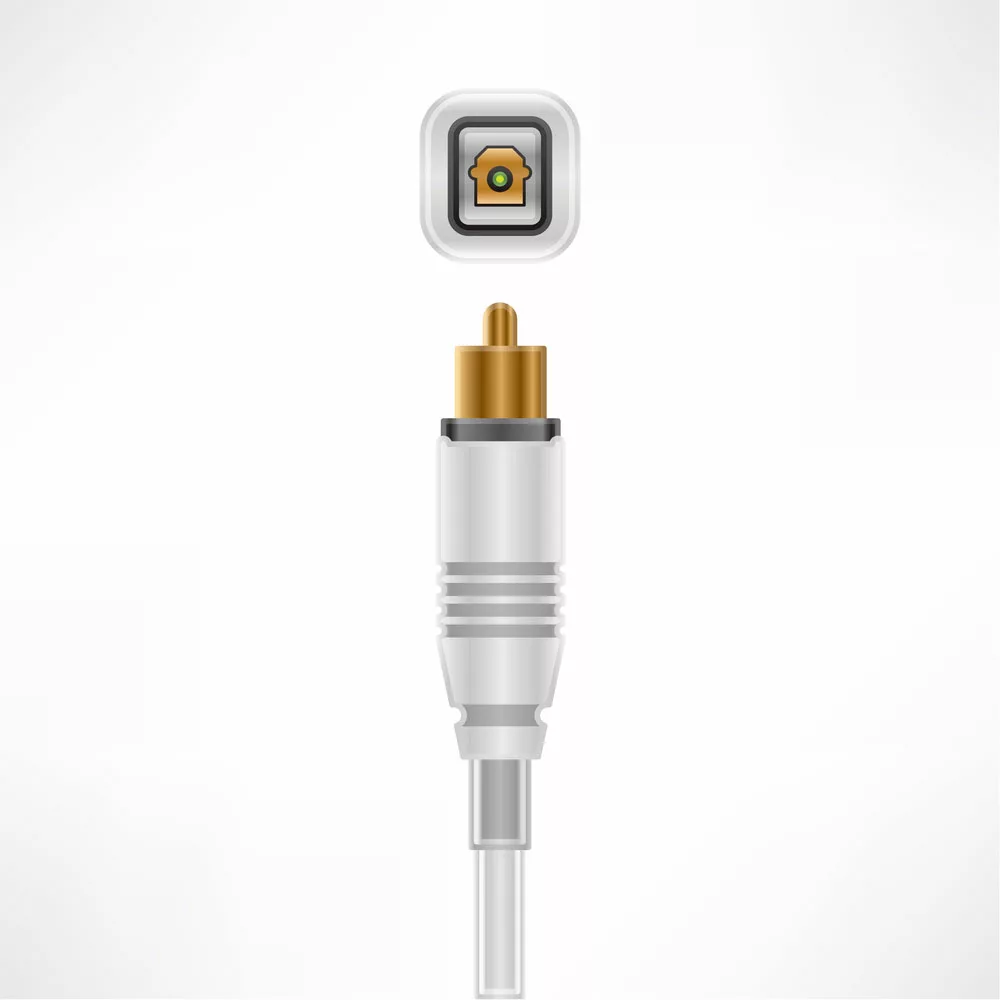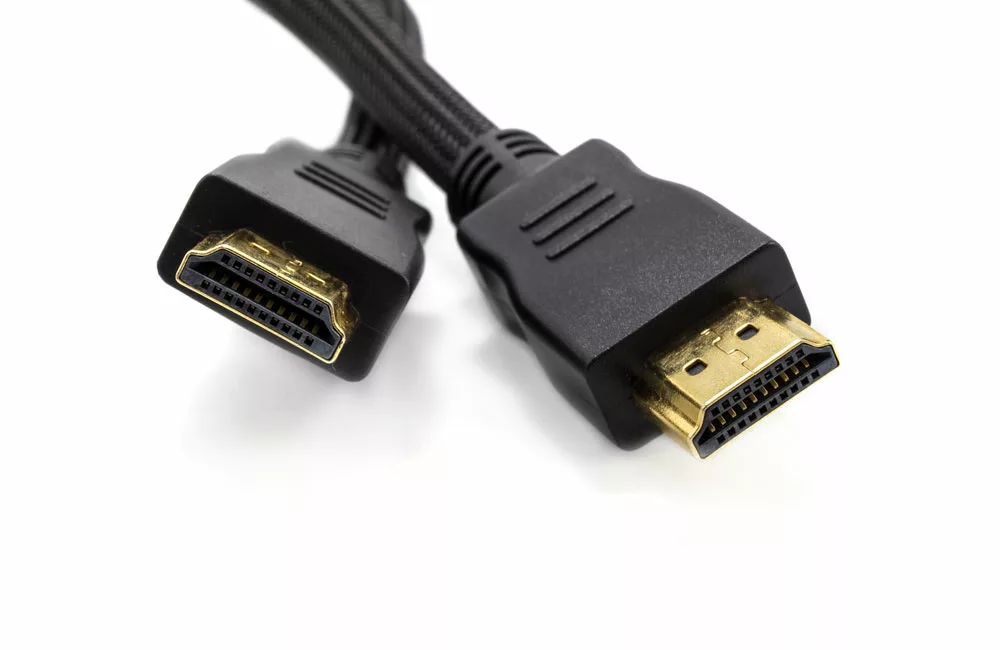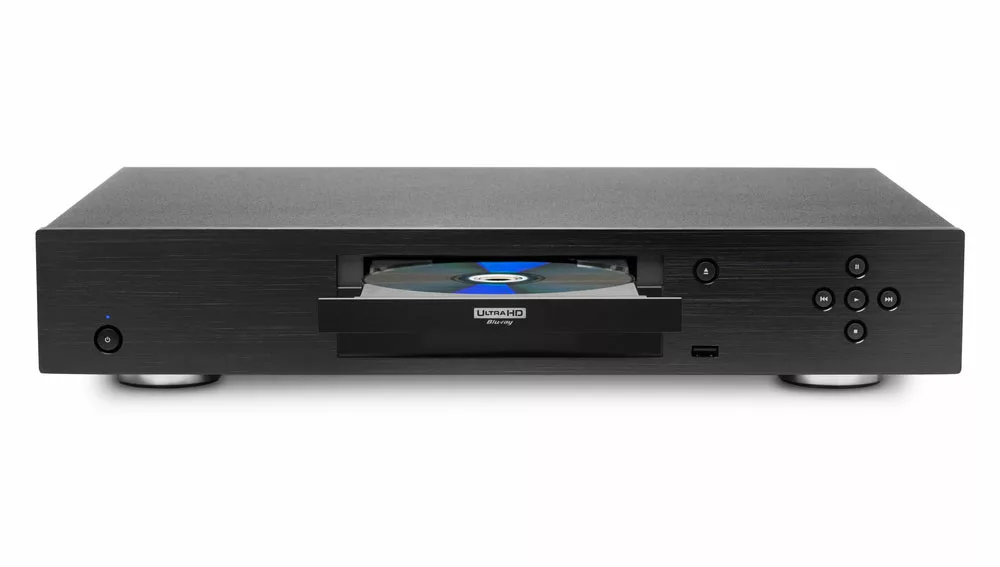If you want to improve your television’s visual quality, you need a soundbar for an excellent audio experience. Your television has an optical audio output; you can use it. Get a digital optical audio cable and connect your TV to a compatible soundbar system. This article will discuss some.
Table of Contents
- Ways of transferring audio
- How do optical cables work?
- Copper wire Vs. Fibre Optic light: Which is better?
- HDMI Vs. Optical: Which is better?
- Digital Optical Audio Cable: What Devices Use Digital Optical Connections?
- Digital Optical Audio Cable: Audio Formats Supported by Optical
- Digital Optical Audio Cable: Why Don’t Optical Cables Support all Audio Formats?
- What do the best optical cables have in common?
- How to Connect an Optical Cable
- Conclusion
Ways of transferring audio
Before going into the details about optical cables, you must understand three popular ways of transferring audio.
- Analog through the copper wire: it includes 3.5mm, RCA and XLR cables
- HDMI, or High-Definition Multimedia Interface, uses HDMI cables to transmit digital videos and audio.
- S/PDIF (Sony/Philips Digital Interface): with this audio interface, you can digitally transfer audio through a coaxial cable having RCA connectors and through a digital optical cable with TOSLINK connectors.

3.5 mm audio cables
How do optical cables work?
An optical cable uses light in place of copper wires to transfer audio digitally. It is a form of fiber optics that you use in different applications like fiber internet. Digital optical cables also work on a similar principle. It takes the audio data from the source and converts the digital signals into light. And an LED light pushes these optical signals to the receiving end for shorter distances.
When the signals reach the receiving end, the light pulses convert into electrical signals again. This electrical form of audio goes through the connected device for further decoding, amplification, or any other processing. The connected devices can be either stereo receivers, home theatre, or compatible power speakers. These audio devices convert the signals into analog signals so that you hear them through speakers or headphones.
Copper wire Vs. Fibre Optic light: Which is better?
Connecting two devices through copper wire to transfer audio or other data types is the most common way. All the physical audio connections are prone to electromagnetic interference, and you need heavy shielding to protect the wires. However, heavy shielding makes them heavy and decreases their physical flexibility.
In the digital optical cables, there is no signal interference. These cables have an outer layer of rubber, fabric, or plastic; on their inner side, they have multiple glasses or plastic fiber strands. Light travels faster in fiber strands, allowing faster light travel from source to destination. You must note that although digital cables are very flexible and work even when curved, they might not work if they have a bent or kink in them.

Caption: optical audio cable with round connector
HDMI Vs. Optical: Which is better?
Both optical and HDMI transfer digital audio between two devices. Both of them are better than analog cables and can pass multichannel audio. However, the significant difference between the two is that HDMI can transfer high-resolution audio formats, including the one on streaming services like DTS HD Master Audio and Dolby Atmos. Optical cables fail to transfer these audio formats.
HDMI can transfer video signals also. So, you can use just one cable for both audio/video transmissions.
You can use optical cables when you don’t have an option for HDMI, like in some old A/V receivers. Or when your whole setup is ready, and you only need the audio, you can opt for optical. Sometimes, some sound bars come with a surround sound feature, but if you connect it with optical, you may not get that benefit.
At the same time, you must understand that although HDMI supports Dolby digital and is good even, you can only enjoy its real benefits if you have decent gear.

Caption: HDMI cable
Digital Optical Audio Cable: What Devices Use Digital Optical Connections?
Based on the brands and models, several devices use digital optical connections, including:
- DVRs
- Game consoles
- Cable/set-top boxes
- Disc players (UHD Blu-ray, DVD, Blu-ray disc player)
- Home theater receivers
- AV preamp/processors
- TVs
- Soundbars
- Network Streaming players
- Streaming amplifiers
Some audio players have a mini-optical jack, and you will need a Toslink-to-mini optical cable adapter for such ports. Nowadays, many UHD Blu-ray players no longer use digital optical connections. Instead, they are using HDMI connections.

Caption: Blu-ray player
Digital Optical Audio Cable: Audio Formats Supported by Optical
There are several formats that digital optical cables and connections support.
- PCM 2.0
- DTS-ES Discrete 6.1
- DTS 96/24 (96kHz/24bit audio)
- Dolby Digital EX 6.1
- Dolby Digital 2.0 to 5.1
- DTS Digital Surround
- DTS-ES Matrix 6.1
Here are some audio formats that digital optical connections and cables do not support. In these formats, you will need HDMI connections. These are
- Dolby Digital Plus
- Dolby Atmos
- Dolby TrueHD
- DTS-HD Master Audio
- DTS:X
- DTS-HD Master Audio
- Auro 3D Audio
Digital Optical Audio Cable: Why Don’t Optical Cables Support all Audio Formats?
The digital optical cables and connections do not have the required bandwidth capacity, and thus they cannot support all audio formats. Although digital optical does not support two-channel stereo audio and surround sound formats, they are still quite popular. For example, PCM 2.0 gives uncompressed audio. Audio professionals often do not consider PCM 2.0 and two-channel analog audio the same. However, when used correctly, you will notice very little audible difference between the two.
You may notice a difference between surround sound lossy formats sent by digital optical and lossless formats sent through HDMI.
What do the best optical cables have in common?
Some of the characteristics to note in high-quality optical cables include:
- They must be compatible with HD devices with TOSLINK labeled or standard optical ports.
- Their design must have polished monofilament to ensure efficient signal transmission and smooth transition between components.
- The cables with 24K gold-plated connectors and aircraft-grade aluminum terminals give a highly conductive and secure connection.
- Ensure the cable has a braided cotton jacket to allow flexibility and easy gripping for placement.
How to Connect an Optical Cable
If you want to connect your TV/cable box/DVD player or Blu-ray player to the sound system or home theater, the basic steps are the same for connecting optical audio.
Here your source should have optical output ports, and the soundbar system or home theater must have an optical audio input port.
- First, check whether the optical audio connector comprises a protective cap, as some TV ports have removable rubber caps that protect the output audio port when not in use. If your TV has this cap on the output connector, pull it out. Some other TVs have a protective door that gets pushed inside when you insert the cable. Check the same when you are connecting your DVD player or cable box.
- Next, look for the optical input connection type on your home theater or sound system. Look for any plastic plug or cover as you did for the TV. If it is there, remove it for cable plugging.
- Now, connect one end of the audio optical cable to the optical output connection on your source. Make sure the cable’s connector matches the device’s connector. The optical port’s specific design will only fit into the correct plug. The plugging becomes more manageable if you align the cable at the right angle.
- Next, connect the cable’s other end to the optical input of your sound bar or amplifier. Sometimes, there is more than one optical input. So, note the label to find the right audio source later.
- Now, when you have plugged the cable into both the input and the output, it’s time to turn on your cable box or TV. Set the audio output in the TV’s audio menu to “digital out” mode.
- In some TV models, you may not need to enable optical output, but you may have to switch off the TV speaker from the audio menu.
- Finally, switch on your amplifier or sound system. Select the right optical input source from the audio menu. There is generally only one optical input in soundbars, so you need not make any selections to make the system work.
Conclusion
Before you pick a good quality optical audio cable, you must look for a few factors. Apart from the length, the quality of the construction is essential to get impressive sound quality. Further, if you want to run the optical cable inside the wall, your cables should support the installation. No matter your application, you must always contact professionals before investing in a cable. Cloom’s professionals are ready to hear from you and help you in every possible manner to get the right set of optical cables for your application.
